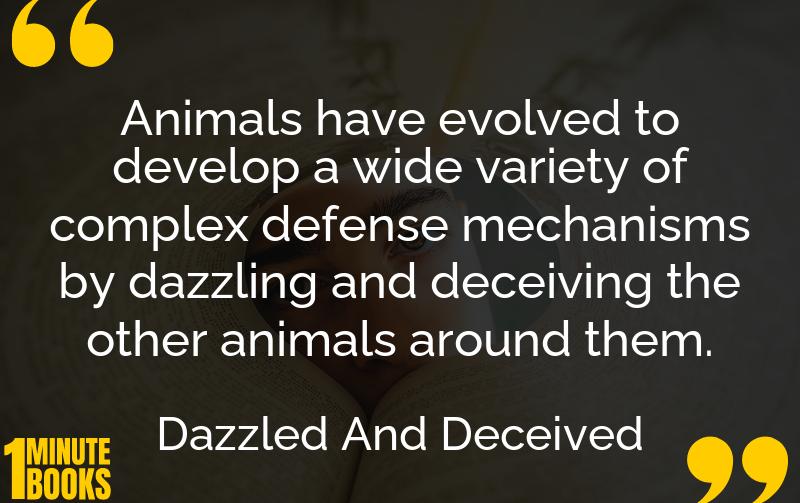
Dazzled and Deceived explores how animals use camouflage, mimicry, and other forms of deception for survival. From predators like the anglerfish to prey like butterflies, the book highlights nature’s cunning innovations.
Main Lessons
- Camouflage is a universal tactic used by animals for both offense and defense.
- Anglerfish use a bioluminescent lure to attract their prey, dazzling them into a false sense of security.
- Stargazers are ambush predators that use sand camouflage and can deliver electric shocks to capture their prey.
- Eastern screech owls use their bark-like feathers to blend into their environment, concealing themselves from both predators and prey.
- Some animals, like zebras, use patterns to confuse predators, rather than blend into their environments.
- Colorblindness in predators, like lions, influences the camouflage techniques of their prey.
- Apostatism involves utilizing bright colors as a warning signal to predators of potential toxicity or danger.
- Insects and butterflies often mimic their surroundings or other creatures to avoid detection.
- Animals’ camouflage techniques can be influenced by environmental factors such as habitat and seasonal changes.
- Disruptive coloration can confuse predators by creating misleading patterns that disguise prey.
- The poison frog is an example of how bright coloration can serve as both a warning signal and a defense mechanism.
- Animals have evolved intricate and varied defense mechanisms, highlighting nature’s adaptability and creativity.
- Mimicry is a form of visual deception where animals resemble other objects or organisms for protection or predation.








